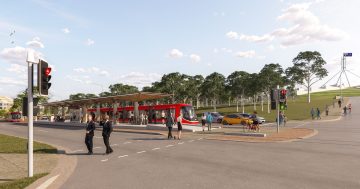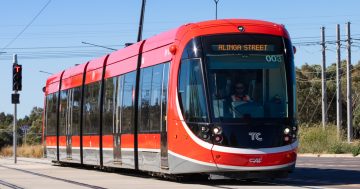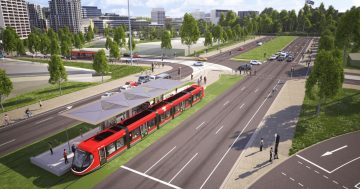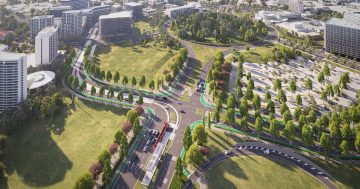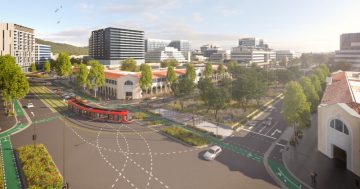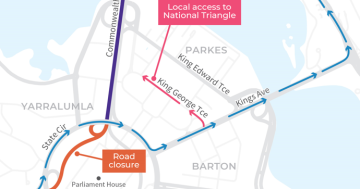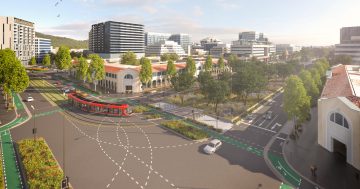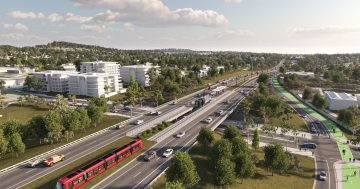
Looking towards the city at the 92-year-old trees slated for removal if Stage 2 of light rail is approved. Photos: Ian Bushnell.
The ACT Government will only be able to replant trees on Commonwealth and Kings Avenues during construction of the tram line to Woden by taking out a traffic lane, according to urban planner John Easthope.
Mr Easthope, who worked for the National Capital Development Commission in the 1980s and for the past 20 years had been designing Canberra suburbs, has accused the Government of misleading the public over the planned removal of 28 historic trees on Commonwealth Avenue and about 20 others on Kings Avenue.
He says the Government needs to come clean about why the 92-year-old trees have to go, rejecting the claim that they are in decline and saying they should be considered for their heritage value and retained.
“I would like to point out that the trees are to be removed to allow the construction of the light rail in the median and its footprint requirements and not [because of] health issues. I would further outline that due to the impact of rail construction there will be insufficient room to plant trees legally,” Mr Easthope wrote in a recent letter to City News in support of horticulturalist Cedric Bryant.
The Stage 2 Light Rail Update says the original Charles Weston 1920s cedar plantings have a life expectancy (assessed in 2013) ranging from five to 40 years, citing the National Capital Authority assessment that ‘many of the street trees are declining, and it’s timely to plan for tree renewal’.
But Mr Easthope told The RiotACT that the 12-metre wide median was not wide enough to cater for the tram and trees, particularly low-branching cedars like the ones slated for removal.
“I measured the tracks and clearances. Because the median is 12 metres wide, you need nine metres for the tram and one-and-a-half metres to plant a tree, let alone a cedar,” he said.
“All those trees have to go because there is no room, and there is no room to replant trees, unless they take a lane and reduce the number of lanes on Commonwealth Avenue.” And a similar situation would be destined for Kings Avenue, as well.
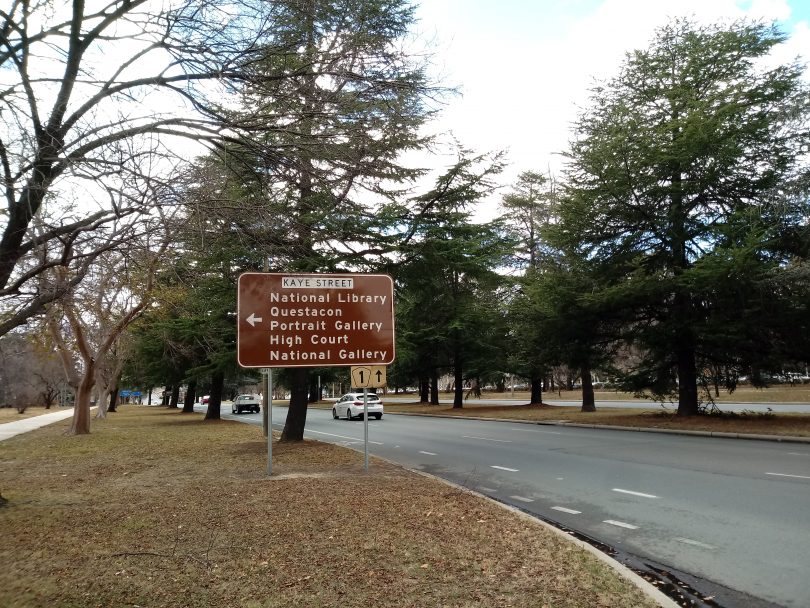
It was a similar situation in Kings Avenue.
“Somebody should be held to task in terms of evaluating where the tram goes. Sure the trees may have to go but don’t blame it on the death of the trees, blame it on the fact that you need more room,” he said.
He said the Government had been flippant and uncaring when it came to the fate of significantly historical trees in the Parliamentary Triangle, saying it was not clear what kind of trees would be planted or how it would be done.
“The character of the area will change,” he said.
Mr Easthope said there had also been a lack of thought into the consequences of running the tram through Barton.
“They haven’t thought out the actual urban outcome, haven’t thought out how they’re going to plant trees, or what they’re going to do when it goes past Old Parliament House. Maybe they have but they’re not telling us, not giving us the full rationale about tree removal,” he said.
He understood the Stage 2 preferred route came down to viability and cost-benefits, and that it was good for tourists in that area but ‘how do you do it sensibly?’.
Mr Easthope said the tree plantings on the Northbourne median, which is twice as wide as the Commonwealth one, were designed to accommodate a tram down the middle, but they had all been removed to make way for light rail, with new plantings of contentious brittle gum replacing them.
“As the name suggests, probably not a very sensible solution,” he said.
“Can you imagine trying to do that sort of thing down Commonwealth Avenue, with a median half the size?”












